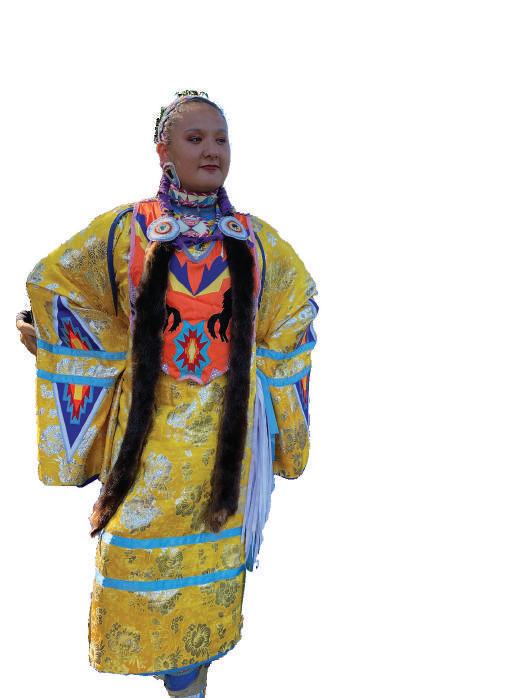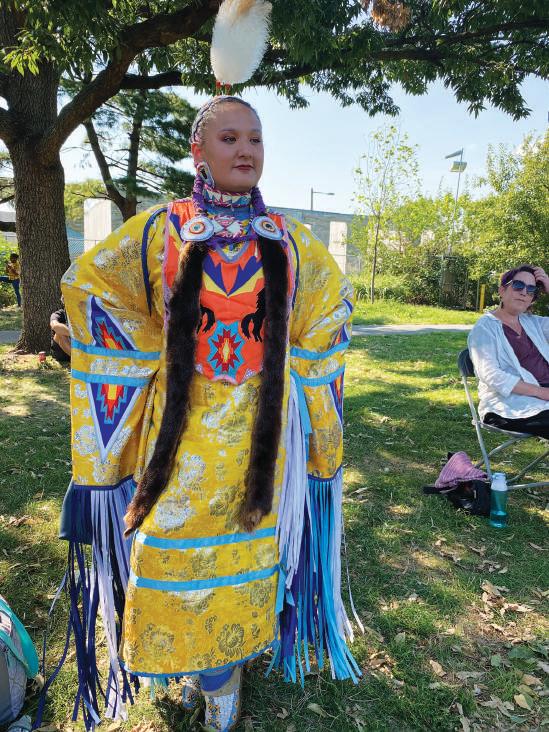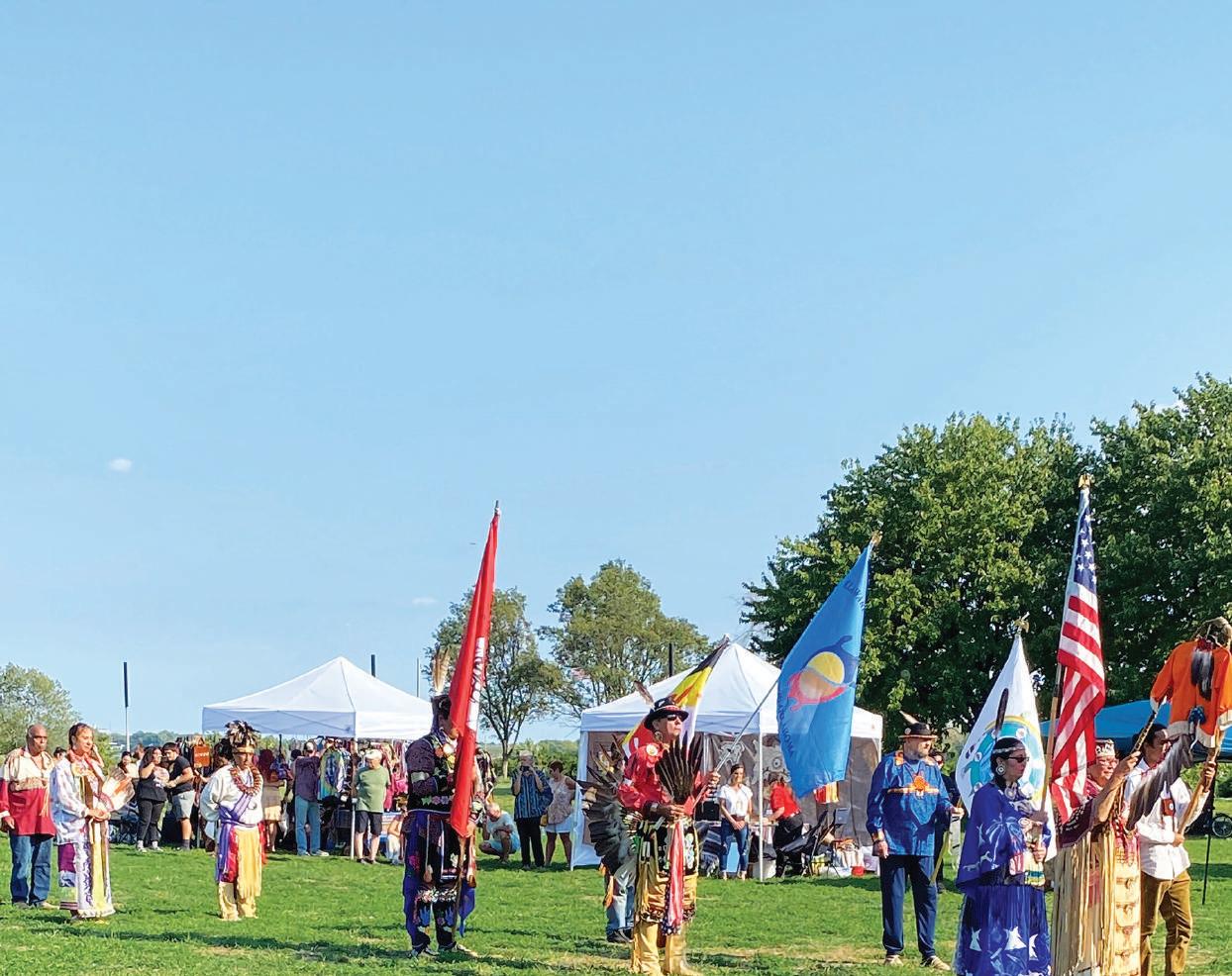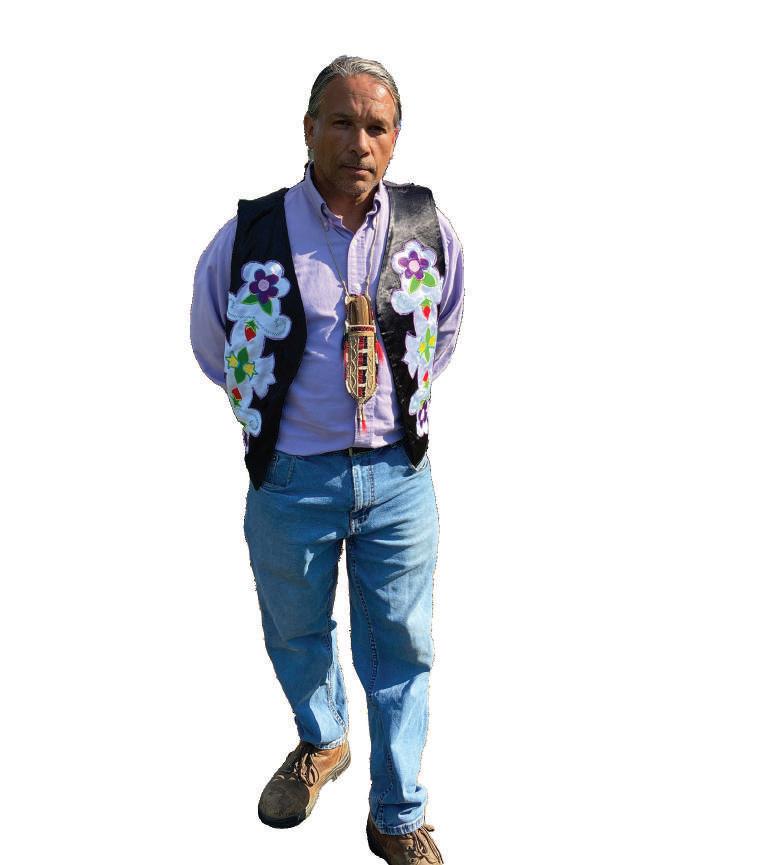
4 minute read
Reconnecting with My Native Roots:
Understanding The Importance Of Tradition And Heritage
By Malaya Combs
Advertisement
rowing up, my traditions were important to me, but others seemed to perceive them with a significance I didn’t yet understand.
I had always attended powwows, wearing my regalia and eagle feath- distances to the northern part of North Carolina, where my tribe, the Lumbee Tribe, first originated. My aunt and grandma would sit in the front seat of their red PT Cruiser, driving ten to twelve hours with me and my little cousin in the back, the two of us anxiously fussing, “ARE WE


When you have to travel far to stay connected to your heritage, the distance between becomes limitless. One day, we stopped visiting North Carolina. It wasn’t that I had forgotten—my life just became busier. I was getting older and focusing on my career goals. Everyone drifted into different spaces as we all continued living our own lives. It seemed there was no time to keep up with my Native American heritage. For seven years, I wasn’t actively involved.
When I was young, piling into that PT Cruiser for a road trip was just fun.
I attached no importance to why we traveled so far—the drive was connected to my younger and free-spirited self. Now, I realize I may have taken my participation in tradition for granted. Yet, I don’t think I really knew what it meant to be Native American at the time.
Later, as I learned more and relived some of my childhood experiences, I realized how our dances represent much more than the energy we feel on our two feet. The drums symbolize our mother earth and her heartbeat, representing how loved we are. The singing, in which we all have our own story, tells our painful history: “You did not take our language or heritage from us.” It brings our history and ancestral struggles to life.
In the nineteenth century, the US government forced assimilation on Native Americans, taking tens of thousands of Native American children away from their families and placing them in boarding schools. These weren’t the elite private schools we associate with boarding schools today; these were spaces uniquely created to strip Native Americans of their culture, tradition, and heritage. Tens of thousands of Native children were forced to take on new Anglo-American names, change their hair and clothes, and abandon their way of life because it was believed to be inferior to that of white people (www.history.com, Becky Little, Nov 1, 2018).
In my history classes, I deeply felt the impact of past assimilation policies when I learned that children were brutally beaten near death, with deep, painful scars and wounds on their bodies. They were told only to speak English and cut their hair. As a Native, I know that our long hair represents the power and strength attached to us. Cutting hair was a way to rob these children of their power and heritage.
Although my ancestors struggled with prohibited language and cultural bans, my family never let the pain prevent the continuation of our Native American tradi tions. They continued the powwows even when there were bans and consequences for disobeying these prohibitions. Today, there's a growing trend among young Native Americans to stay in touch with their roots.
By adopting the customs of my ances tors, singing and coming together with other tribes, I've committed to honoring Native American traditions. That’s the real beauty: despite the upheaval of history, nothing can take away my customs, not even assimilation. I may at times lose touch, but I will always come back to tradition, my home.
On September 18, 2022, my grandma, Cornelia Dimalanta, hosted the first powwow through her organization, The Native American House Alli ance, at Penn Treaty Park in Philadelphia, PA. In my hometown, tribal members came together from several states and countries, including Con necticut, Florida, Canada, and New Mexico. It was a reunion of tribal nations, and Mayor Jim Ken ney and other state senators appeared, discussing the treaty between William Penn and the American Indians. A celebratory event took place, honoring first responders, where the Philadelphia Fire Department received praise and respect through an honorary dance.
This was different from the powwows I normally attended. Usually, I dance and wear regalia. Instead, I sat this one out to observe, seeking insight. I felt at peace, calm, and happy. I didn’t have to travel so far this time—all I had to do was be home and in the moment. The significance was that my heritage was there, and I knew who I was and what I must continue.
In this moment, I witnessed the beauty of the way we honor and bring our traditions to life and how our elders do everything in their power to keep our culture alive. We may not all understand our heritage, culture, and historical identities, but I ask that you take the time to explore the value and meaning of your own identity. Explore your ancestors and elders, and always ask questions to discover your deeper roots.
MEANINGS BEHIND THE WORDS:
Regalia: Clothes that portray the personality, symbols for tribes, and uniqueness of each individual.

Powwow: A celebratory gathering of different tribes that involves singing, drum beats, dancing, and food.
Eagles/Feathers: The eagle is a sacred bird for us because of its hunting ability, impeccable eyesight, and soaring beauty. The eagle is a great spirit to the people above and below because it connects us to the air and sky. The feathers are robust and well put together, even though they are light. The feather has a spiritual meaning, which shows how strong nature is. The birds (eagles) tell us to appreciate life through their song, and we as humans forget how beautiful it is to be alive—to dance, sing, and more.







